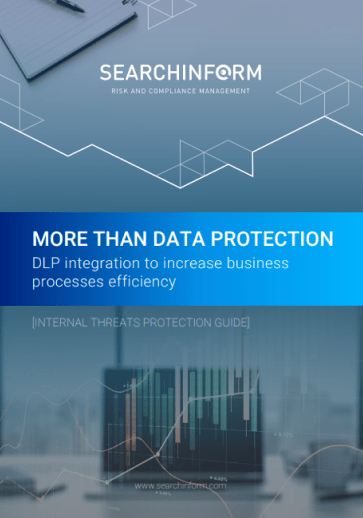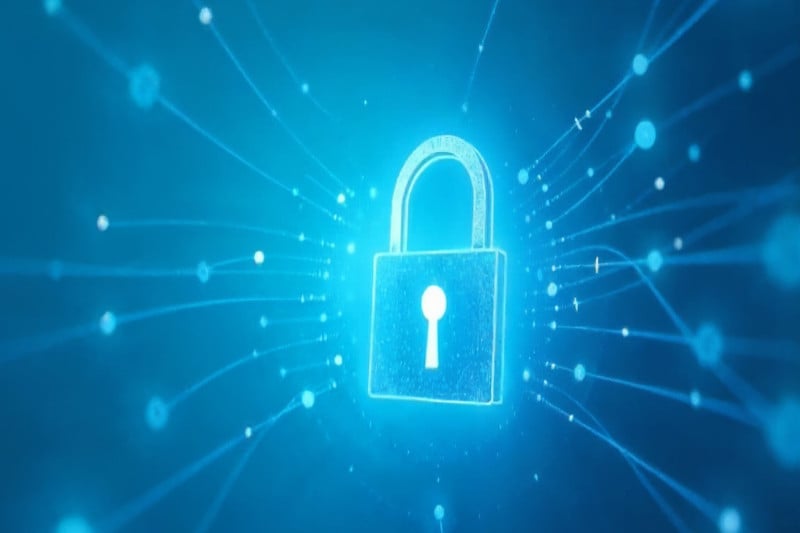Login Tracking:
A Comprehensive Guide
- What is Login Tracking?
- Methods of Login Tracking
- Log File Analysis
- Security Information and Event Management (SIEM) Systems
- User and Entity Behavior Analytics (UEBA)
- Real-time Monitoring Tools
- Database Auditing
- Benefits of Login Tracking
- Enhanced Security and Threat Detection
- Insider Threat Detection and Prevention
- Improved Compliance with Regulations
- Incident Response and Forensic Analysis
- Identifying Unusual User Activity
- Preventing Unauthorized Access
- Challenges of Login Tracking
- Managing Large Volumes of Log Data
- Distinguishing Between Normal and Suspicious Activity
- Ensuring Data Privacy and Compliance
- Integration with Existing Systems
- Training and Awareness
- Login Tracking Best Practices
- Implementing Strong Password Policies
- Multi-Factor Authentication (MFA)
- Regular Log Reviews and Analysis
- Setting Up Alerts for Suspicious Activity
- Data Retention Policies
- SearchInform Solutions for Login Tracking
- Seamless Integration and Real-Time Monitoring
- Behavioral Analytics for Insider Threat Detection
- Simplified Compliance and Reporting
- Customizable to Fit Your Needs
- Comprehensive Security and Streamlined Workflow
What is Login Tracking?
In today's digital environment, security is paramount. One effective way to ensure system safety is through login tracking. This practice involves monitoring and recording user login activities, providing insights into access patterns, and helping to identify potential security risks.
At its core, login tracking is designed to record user access—when, where, and how they log in. Unlike other security measures such as intrusion detection systems, which focus on spotting active threats, login tracking provides a detailed log of user behavior. This enables organizations to detect anomalies over time, whether it’s an employee logging in at odd hours or from unusual locations. The value of login tracking lies not only in identifying threats but in creating a historical record that can be analyzed for suspicious activity or policy violations.
As data breaches and insider threats continue to rise, login tracking has become essential for maintaining security. Detecting unauthorized access or unusual behavior before it escalates into a significant issue is more critical than ever. Beyond protecting against external threats, login tracking also plays a vital role in ensuring compliance and safeguarding sensitive information. To effectively implement login tracking, it’s important to explore the various methods available, each offering unique advantages in addressing these security challenges.
Methods of Login Tracking
When it comes to securing digital environments, login tracking stands as one of the most fundamental practices. Organizations must adopt the right tools and techniques to monitor user access, prevent unauthorized entries, and respond quickly to suspicious activity. Each method of login tracking brings something unique to the table, offering varied capabilities to meet specific security needs. Let's dive into some of the most effective methods for tracking logins and understanding how they can help keep systems safe from both external and internal threats.
Log File Analysis
At the heart of login tracking lies the simple but powerful method of log file analysis. This method involves capturing every login attempt—whether successful or unsuccessful—and storing that data in a log file. These logs serve as a detailed record, offering insights into who accessed the system, when, and from where.
Consider a scenario where an organization notices several login attempts outside normal working hours. A simple review of the log files would immediately flag this anomaly. It may seem innocent, but these irregular login patterns could indicate an employee accessing sensitive information during off hours or a potential hacker probing for vulnerabilities. By continuously analyzing these logs, security teams can identify patterns over time, spot trends, and catch anomalies early on.
Real-world examples abound where log file analysis has made a significant difference. For instance, a financial institution was able to detect unauthorized access to high-value accounts by recognizing unusual login behavior, such as multiple failed login attempts from unfamiliar IP addresses. This proactive tracking enabled them to implement timely measures, ultimately preventing a potential breach.
The beauty of log file analysis lies in its simplicity and versatility. While it may not be as sophisticated as other methods, it can be combined with other tools for a layered defense, offering invaluable data for root cause analysis and forensic investigations when something goes wrong.
Security Information and Event Management (SIEM) Systems
As cyber threats continue to evolve, traditional methods like log file analysis might not be enough to stay ahead of sophisticated attackers. This is where Security Information and Event Management (SIEM) systems come into play. These systems go beyond basic login tracking by gathering, correlating, and analyzing data from various sources across an organization’s IT infrastructure.
A SIEM system acts like a digital detective, sifting through an enormous volume of data—such as firewalls, servers, and network devices—and providing a unified view of security events. By aggregating this data, SIEM systems can detect patterns that may indicate malicious activities, such as multiple failed login attempts or logins from new devices in geographically distant locations.
Take a healthcare organization, for example, which is dealing with sensitive patient data. With SIEM systems in place, the organization can instantly detect and respond to any attempt to access confidential patient records outside of authorized times or locations. The system flags any suspicious behavior and sends real-time alerts to the security team, allowing for immediate investigation and mitigation.
For businesses with large, complex IT environments, SIEM systems offer real-time, automated insights that can significantly improve the response time to potential security breaches. By continuously monitoring login activity across multiple systems, SIEM provides a comprehensive, multi-layered defense against security threats.
User and Entity Behavior Analytics (UEBA)
User and Entity Behavior Analytics (UEBA) is a cutting-edge tool that takes login tracking to the next level. Unlike traditional methods, which rely on predefined rules, UEBA uses machine learning to build behavioral profiles for each user or entity. It learns what normal activity looks like for a given user and flags any deviations from this behavior.
Imagine a scenario where an employee's login pattern suddenly changes. Normally, they log in from a specific device and location, but today they’re logging in from a new city using an unfamiliar device. While traditional login tracking might not immediately identify this as a problem, UEBA would flag this deviation as suspicious. This allows security teams to quickly investigate the change in behavior, potentially preventing a cyberattack before it escalates.
UEBA’s ability to detect anomalies in user behavior offers a more intelligent approach to login tracking. It adapts over time, becoming more accurate as it learns user habits. For example, if an employee typically accesses sensitive financial data in the afternoon but suddenly starts accessing it at midnight, UEBA would raise an alert, signaling a potential insider threat or a compromised account.
By automating the detection of abnormal activity, UEBA helps organizations move beyond just reactive security and toward a proactive defense model, enabling faster responses to emerging threats.
Real-time Monitoring Tools
While login tracking methods like log file analysis and SIEM systems offer great insights into user behavior over time, there are situations where immediate action is necessary. This is where real-time monitoring tools shine. These tools provide instantaneous visibility into login activities as they happen, enabling security teams to respond quickly to suspicious behavior.
Imagine an employee suddenly logging in from a foreign country without warning. If this happens after business hours, it’s more than likely a case of compromised credentials or unauthorized access. With real-time monitoring, security teams are instantly alerted, allowing them to take immediate action, such as locking the account or requiring multi-factor authentication (MFA).
and perform with SearchInform DLP:
Real-time monitoring tools not only provide visibility but also play a crucial role in incident response. By alerting security teams to suspicious login attempts as they occur, these tools help mitigate the potential impact of a security breach. For example, if a financial institution detects a fraudulent login attempt in real-time, the system can automatically initiate a password reset or block the user’s access, preventing further damage.
By providing immediate insights into login activity, real-time monitoring tools ensure that organizations are never caught off guard. These tools are vital for environments where fast, decisive action can make the difference between preventing and succumbing to a cyberattack.
Database Auditing
When it comes to protecting sensitive data, login tracking can’t just stop at user logins. It needs to go further, offering oversight on what users are doing once they’ve gained access. This is where database auditing comes in. Database auditing tracks not only who logged in but also what specific actions they took within a database—what data they accessed, modified, or deleted.
For organizations with highly sensitive data, like financial or healthcare institutions, database auditing is critical for compliance and security. Imagine a scenario where a database administrator logs in to perform routine maintenance, but instead of following protocol, they access and export large volumes of sensitive customer data. Without database auditing, this suspicious activity might go unnoticed until it’s too late.
Through real-time database monitoring, organizations can track exactly what happens within their databases. This level of transparency provides valuable insights into potential misuse or unauthorized access. By reviewing logs of database activities, security teams can quickly pinpoint when and where a breach might have occurred, offering essential data for forensic investigations.
Database auditing is particularly valuable when it comes to regulatory compliance. Laws like GDPR and HIPAA require organizations to monitor and control access to sensitive information. By implementing robust database auditing, organizations can demonstrate their commitment to data security and avoid costly penalties for non-compliance.
Having explored the various methods of login tracking, it's clear that each tool brings unique strengths to the table. But the real value comes from understanding how these methods work together. When implemented correctly, they not only strengthen an organization's security posture but also provide significant benefits across multiple areas. Let's now look at how login tracking enhances security, compliance, and overall threat management.
Benefits of Login Tracking
Login tracking isn’t just a tool for monitoring access; it’s a powerful strategy that brings tangible benefits to organizations. From fortifying security to ensuring compliance, it plays a crucial role in protecting sensitive data and detecting potential threats early. But the real power of login tracking lies in its ability to provide comprehensive insights into user behavior and system activity, which can prevent security breaches, improve operational efficiency, and help organizations meet regulatory requirements.
Enhanced Security and Threat Detection
Consider this: a mid-sized company is experiencing a spike in failed login attempts after hours. Without login tracking, these could easily go unnoticed, leaving the system vulnerable to brute-force attacks or attempts to crack passwords. But with login tracking in place, these attempts are flagged immediately, giving the security team the chance to respond before an intrusion occurs.
This ability to spot suspicious behavior early is a game changer. By continuously monitoring login attempts, security teams can identify anomalies, such as login attempts from unusual locations or devices, and swiftly investigate. In one case, a retail organization was able to detect unauthorized access to its payment system by recognizing irregular login activity, which ultimately prevented a costly data breach.
Beyond detecting immediate threats, login tracking helps organizations build a more robust security posture over time. By gathering data on normal user behavior, security teams can better differentiate between routine access and potentially malicious activity. This ongoing vigilance significantly reduces the risk of unauthorized access or internal misuse.
Insider Threat Detection and Prevention
One of the more insidious threats to an organization’s security is the insider threat. Whether intentional or unintentional, employees, contractors, or vendors with authorized access to sensitive systems can pose a significant risk. Login tracking is one of the most effective ways to detect and mitigate these threats before they escalate.
Imagine an employee accessing sensitive data at odd hours or logging in from multiple devices simultaneously. While these may seem like minor anomalies, they could signal that someone is trying to circumvent normal procedures. With login tracking, security teams can detect these behaviors in real time, allowing them to take swift action.
In a real-world case, an energy company was able to thwart a potential insider attack by using login tracking to identify unusual login times and IP addresses associated with an employee accessing confidential operational data. This early detection helped the company prevent what could have been a significant breach, highlighting how login tracking is an invaluable tool in safeguarding against internal threats.
Improved Compliance with Regulations
Regulatory compliance is a significant concern for businesses that handle sensitive or personal data. Laws like the GDPR, HIPAA, and others mandate strict access controls and monitoring of user activity. Failing to comply can result in hefty fines and damage to a company’s reputation.
Login tracking provides an essential layer of protection, ensuring that organizations can not only monitor access but also demonstrate compliance. By keeping detailed logs of who accessed which systems and when, businesses can produce the necessary documentation during audits. For example, a healthcare provider using login tracking can quickly show that only authorized personnel accessed patient records, ensuring compliance with HIPAA guidelines.
More than just fulfilling regulatory requirements, login tracking provides a framework for organizations to establish best practices for data protection. With a clear audit trail, organizations can not only ensure compliance but also improve trust with customers, clients, and partners who expect the highest levels of data security.
Incident Response and Forensic Analysis
When security incidents do occur, the ability to respond quickly and effectively is crucial. Login tracking provides invaluable insights that can help organizations respond to and investigate security breaches. The data stored in login logs—such as timestamps, user IDs, IP addresses, and device information—creates a detailed timeline that can be reviewed during forensic investigations.
For example, when a financial institution discovered a cyberattack on its payment processing system, login tracking logs played a key role in uncovering the attack’s source and method. By analyzing the login patterns and tracing unauthorized access back to a compromised user account, the institution was able to contain the breach, protect its systems, and recover stolen data.
This level of detail allows for faster and more accurate investigations, reducing downtime and limiting the impact of a breach. In addition, login tracking data can help identify whether the breach was part of a larger attack, offering critical information to security teams as they strengthen defenses for the future.
Identifying Unusual User Activity
Another key benefit of login tracking is its ability to identify unusual user behavior. Not every instance of unusual login activity is the result of malicious intent. However, by spotting anomalies, organizations can take proactive steps to investigate before any real damage is done.
For example, an employee who regularly accesses company resources from a specific location may suddenly log in from a foreign country. While this could simply be the result of business travel, it could also indicate that the employee's credentials have been compromised. Login tracking provides the data needed to identify these patterns and respond accordingly.
In another instance, an e-commerce company was able to spot unusual login activity on its website when a spike in logins from unknown devices triggered alerts. By investigating these patterns, the company quickly discovered that a cybercriminal had stolen customer login credentials and was attempting to access payment data. This early detection allowed the company to prevent a major breach and protect its customers.
Preventing Unauthorized Access
Unauthorized access is one of the most immediate threats to any organization. Login tracking helps prevent this by constantly monitoring who is accessing systems, when, and from where. If an unauthorized user attempts to log in, security teams are notified immediately, enabling them to block access before any damage is done.
A financial services firm, for example, implemented login tracking to monitor employee access to its customer database. One day, the system flagged a login attempt from an IP address that had never been used before. The system automatically triggered a security check, and the login was blocked before any sensitive data could be accessed. Without login tracking, the firm may have never noticed the breach attempt until it was too late.
By continuously monitoring login activity, organizations can stay ahead of would-be attackers and ensure that unauthorized access is prevented before it becomes a serious issue.
While the benefits of login tracking are undeniable, it’s essential to acknowledge the challenges that come with implementing an effective system. From handling vast amounts of data to ensuring smooth integration with existing infrastructure, there are several hurdles organizations must overcome. In the next section, we’ll explore these challenges in detail and discuss how to address them to fully leverage the power of login tracking.
Challenges of Login Tracking
While login tracking brings clear benefits, the path to its effective implementation is not without its hurdles. It’s a dynamic, evolving process, and the challenges organizations face can vary depending on their size, industry, and existing infrastructure. From managing enormous amounts of data to integrating new systems with legacy software, these obstacles require thoughtful strategies and solutions. Let’s take a deeper look at some of the key challenges and how to overcome them.
Managing Large Volumes of Log Data
Login tracking systems generate massive amounts of data—every login attempt, every password reset, and every failed access attempt is logged. While this wealth of information is critical for security, it can be overwhelming for organizations, especially those with large user bases or multiple systems to monitor.
For instance, a global e-commerce platform handling millions of login attempts daily may find it difficult to separate useful data from noise. If not managed properly, the sheer volume of logs can make it challenging to detect meaningful patterns or identify true security threats.
The solution to this challenge lies in filtering and prioritizing the data. By implementing advanced log management tools that automatically classify data based on severity, organizations can ensure that security teams are only alerted to the most critical events. Real-time log analysis can help organizations filter out false positives, ensuring that security efforts are focused on actual risks.
Additionally, the use of machine learning models to predict normal user behavior can further streamline this process. By developing an understanding of regular login patterns, security teams can focus their efforts on monitoring unusual or out-of-the-ordinary activity. This approach not only saves time but also makes it easier to spot malicious logins buried in a sea of harmless attempts.
Distinguishing Between Normal and Suspicious Activity
Not all unusual login events are created equal. A failed login attempt, for example, could be a legitimate error or a deliberate hacking attempt. This makes it difficult for organizations to differentiate between harmless activity and something that requires immediate attention. For instance, an employee who forgets their password may trigger several failed login attempts, but this doesn't necessarily indicate a threat.
In large organizations, with thousands of employees or users, this problem becomes even more complex. One multinational company struggled to identify potential breaches because they were unable to distinguish between legitimate and suspicious login attempts from remote locations. A diligent security team had to sift through hundreds of alerts, many of which turned out to be benign.
A useful strategy to tackle this challenge is to implement behavioral analytics tools, such as User and Entity Behavior Analytics (UEBA). UEBA systems monitor user behavior over time and build a baseline of what is "normal." When behavior deviates from this norm—such as a login attempt at an unusual time or from an unfamiliar location—the system raises an alert. This dynamic approach ensures that potential threats are not lost in a sea of irrelevant data.
Integrating login tracking with other security layers—such as risk-based authentication or multi-factor authentication (MFA)—also provides an added layer of security. These systems can challenge suspicious logins with additional authentication steps, ensuring that only legitimate users can gain access.
Ensuring Data Privacy and Compliance
Login tracking involves handling sensitive user data, which raises significant concerns regarding privacy and compliance with regulations such as GDPR, HIPAA, and CCPA. Storing and processing login data must be done in a way that respects user privacy and meets all necessary regulatory standards. For example, storing personal information such as IP addresses or geolocation data without proper encryption or safeguards can lead to major privacy violations.
A healthcare provider, for example, might struggle with balancing login tracking for security with the privacy requirements of HIPAA. The use of personal data like patient information or healthcare worker credentials requires extra caution. If not done properly, an organization could risk violating regulations and face hefty fines or legal consequences.
To address these concerns, organizations need to implement strict data retention policies and ensure that all login data is encrypted both in transit and at rest. Data should be stored only as long as necessary to meet security and compliance standards, and access to this data should be tightly controlled. Regular audits of data handling practices can help ensure compliance and identify areas where privacy might be compromised.
Additionally, ensuring transparency with users about what data is being collected and why, and providing them with easy-to-understand privacy policies, fosters trust. Implementing data anonymization techniques, where possible, also helps minimize risk by protecting personally identifiable information (PII).
Integration with Existing Systems
Many organizations face challenges when trying to integrate login tracking systems with their existing IT infrastructure. Legacy systems or a patchwork of different technologies can make it difficult to implement a unified login tracking strategy. Without a cohesive system, businesses run the risk of data silos, where login information is stored in different places, making it hard to get a full picture of user activity.
For example, a financial services company that operates in several countries may be using different authentication systems in each region, complicating the process of tracking user logins across all systems. Without integration, security teams would need to log into each system individually to check for suspicious activity, a time-consuming and inefficient process.
The key to overcoming this challenge lies in using Security Information and Event Management (SIEM) systems, which can aggregate data from multiple sources and provide a centralized view of login activity. This allows organizations to monitor all logins in real-time from one dashboard, making it easier to detect security breaches across systems and respond quickly. Additionally, SIEM platforms can often integrate with existing IT systems, reducing the complexity of implementation.
In cases where integration with legacy systems is unavoidable, organizations can adopt a phased approach, starting with the most critical systems and expanding over time. Ensuring compatibility and performing regular testing helps identify and resolve issues before they cause disruptions.
Training and Awareness
Even with the best tools in place, login tracking efforts can fall short if employees aren’t properly trained. Many security incidents occur because employees, unaware of the risks, fail to follow security protocols. Whether it’s weak passwords, failing to log out of shared devices, or inadvertently falling for phishing schemes, employees are often the weakest link in the security chain.
For instance, a large retailer experienced a data breach after an employee reused their login credentials across multiple platforms, which were subsequently stolen in a cyberattack. The breach could have been prevented if the organization had educated employees about the dangers of password reuse and the importance of following security protocols.
Effective training programs should include a clear explanation of login tracking’s role in protecting sensitive information, as well as the individual’s responsibility in safeguarding their login credentials. Organizations should also emphasize the importance of using strong, unique passwords, enabling multi-factor authentication (MFA), and being vigilant about suspicious login attempts.
While the challenges of login tracking are significant, they can be effectively addressed with the right strategies. By leveraging advanced tools, adopting strong policies, and continuously educating employees, organizations can create a robust login tracking system that maximizes security, ensures compliance, and provides a smooth user experience. Now, let's explore some best practices that can help organizations implement login tracking effectively and overcome these challenges.
Login Tracking Best Practices
In the world of cybersecurity, login tracking is not just about keeping an eye on who’s logging in and when—they’re about building an environment where security and efficiency thrive hand in hand. While the technology and tools are a critical part of the equation, how you implement and manage login tracking can make all the difference. Whether you're a small business or part of a large organization, following best practices ensures that login tracking becomes a seamless part of your overall security strategy.
Implementing Strong Password Policies
One of the most fundamental steps in securing login processes is enforcing strong password policies. It's easy to underestimate the importance of this, but think of this as the first line of defense—without it, even the most sophisticated login tracking systems can only do so much. Weak passwords, such as "password123" or "admin," are an open invitation to cybercriminals.
Take the case of a retail company that experienced a data breach after a hacker gained access to an employee account using a simple password. Had they enforced a stronger password policy, with requirements for special characters, numbers, and a minimum length, the hacker’s task would have been much harder. Strong passwords are harder to guess and far more likely to stop a malicious actor in their tracks.
Organizations should also educate their users about password hygiene—reminding them not to reuse passwords across multiple sites and encouraging the use of password managers to help generate and store secure credentials. Implementing a strong password policy isn’t just a best practice; it's a critical component of your overall security strategy.
Multi-Factor Authentication (MFA)
While login tracking helps detect potential threats, multi-factor authentication (MFA) adds another powerful layer of protection. By requiring users to provide additional verification (something they know, like a password, plus something they have, such as a mobile phone for an OTP), MFA makes it significantly harder for unauthorized individuals to gain access.
In a real-world scenario, a large financial institution deployed MFA after noticing a rise in phishing attacks targeting their employees. One employee’s login credentials were stolen, but the attacker was unable to complete the login process because they lacked access to the employee's phone for the second authentication factor. MFA saved them from a potential security breach, proving that adding extra steps to the login process can have a dramatic impact on protecting valuable assets.
When implemented alongside login tracking, MFA offers a two-fold approach: it not only helps secure accounts but also provides real-time monitoring that can identify and prevent unauthorized login attempts. By requiring multiple forms of verification, organizations reduce the likelihood of credentials being compromised, even if they’re stolen.
Regular Log Reviews and Analysis
Once you’ve set up your login tracking system, don’t let the data sit idle. Regular log reviews and analysis are essential to staying ahead of threats. This might sound obvious, but many organizations fall short in this area, overlooking the importance of routine log file reviews. The earlier you spot anomalies in user behavior, the faster you can respond to potential threats.
Imagine a healthcare provider that noticed odd login behavior—multiple failed attempts, followed by a successful login at 3 a.m. The system flagged this as suspicious, prompting an immediate review of the logs. It turned out to be an attempted cyberattack by an external actor using stolen credentials. Thanks to the log review, the IT team was able to block the attacker before they could access patient data.
Regular reviews don’t just help detect security incidents; they also serve as an opportunity to identify inefficiencies or areas where login tracking processes can be improved. By staying on top of these logs, organizations can continuously refine their security measures and ensure they're always one step ahead of the game.

Setting Up Alerts for Suspicious Activity
Another important best practice in login tracking is configuring automated alerts for suspicious login activity. These alerts serve as early warnings, enabling security teams to take immediate action before a potential breach can unfold.
For example, an international logistics company had set up alerts for logins outside business hours and from unfamiliar locations. One day, an alert triggered when an employee attempted to log in from a foreign country where they had never traveled. This alerted the security team immediately, who were able to lock the account and confirm that the login attempt was unauthorized. The alert system prevented a major breach and highlighted the effectiveness of proactive, automated security measures.
These alerts should be configured based on known user behaviors—such as typical login times, IP addresses, and device types—to ensure that the system can differentiate between normal and suspicious activity. The faster the response, the less likely it is that the attacker can penetrate the system.
Data Retention Policies
While login tracking offers vital security insights, it also generates large amounts of data. Managing this data effectively is essential, not only to ensure security but also to comply with data protection regulations like GDPR or HIPAA. Data retention policies define how long login logs are kept, ensuring that the data is available when needed for analysis but not stored indefinitely, which could pose a security risk in itself.
For example, an e-commerce platform adhered to a strict data retention policy, automatically archiving login logs after 30 days. When a customer reported an unauthorized transaction months after making a purchase, the platform was able to retrieve the login logs from the specific time frame and determine that the unauthorized login had indeed occurred. By following a well-defined retention policy, the company was able to resolve the issue quickly without retaining unnecessary data.
Data retention policies should strike a balance—retaining login data long enough to meet security, compliance, and operational needs while ensuring secure disposal once it's no longer necessary. By defining retention periods and using secure storage, organizations can protect sensitive login data from unauthorized access. While best practices strengthen login tracking, addressing insider threats requires focused attention. Now, let’s explore how SearchInform’s solutions can enhance login tracking and help detect and prevent these internal risks effectively.
SearchInform Solutions for Login Tracking
Login tracking is essential to securing systems, but to truly maximize its effectiveness, you need the right tools. SearchInform’s solutions provide a comprehensive approach, combining real-time monitoring, advanced analytics, and seamless integration to ensure you can detect, prevent, and respond to threats quickly and effectively.
Seamless Integration and Real-Time Monitoring
One of the key challenges with login tracking is integrating multiple systems into a unified platform. SearchInform’s solution addresses this by providing seamless integration across different environments, allowing organizations to monitor login data from a single, unified dashboard. This approach eliminates the need to switch between multiple systems, streamlining the process for security teams.
Real-time monitoring ensures that suspicious activity, such as logins from unfamiliar locations or unusual hours, is flagged instantly. Alerts are triggered as soon as abnormal login patterns are detected, allowing for immediate action.
Behavioral Analytics for Insider Threat Detection
Login tracking goes beyond recording logins. With SearchInform’s advanced behavioral analytics, the system learns user behavior over time and identifies deviations from the norm. If a user logs in from an unusual location or accesses data outside their typical scope, the system raises an alert.
This proactive approach helps detect insider threats, where malicious activity is often harder to spot. By correlating login data with behavior, SearchInform offers a more complete picture of user activity, ensuring security teams can catch threats before they escalate.
Simplified Compliance and Reporting
SearchInform’s solution also simplifies compliance with regulations like GDPR and HIPAA. By automatically tracking login activity and storing it securely, organizations can quickly generate reports for audits, demonstrating their commitment to data protection. Automated reporting reduces administrative burden, making compliance easier and more efficient.
Customizable to Fit Your Needs
Every organization has unique security requirements, and SearchInform’s platform is flexible enough to meet those needs. Whether you’re a small business or a large enterprise, the solution can be tailored to fit your specific goals, from tracking login events to setting up customized alerts.
Comprehensive Security and Streamlined Workflow
SearchInform’s login tracking solution not only provides enhanced security but also streamlines workflows. By consolidating login data, detecting abnormal behavior, and integrating with your existing infrastructure, SearchInform helps you stay ahead of potential threats without disrupting daily operations.
With SearchInform, login tracking becomes a powerful tool in your cybersecurity strategy, allowing you to monitor access, prevent insider threats, and ensure compliance—without the complexity. Ready to strengthen your organization’s security? Explore SearchInform’s solutions today and take control of your login tracking needs!
Extend the range of addressed challenges with minimum effort
Company news
SearchInform uses four types of cookies as described below. You can decide which categories of cookies you wish to accept to improve your experience on our website. To learn more about the cookies we use on our site, please read our Cookie Policy.
Necessary Cookies
Always active. These cookies are essential to our website working effectively.
Cookies does not collect personal information. You can disable the cookie files
record
on the Internet Settings tab in your browser.
Functional Cookies
These cookies allow SearchInform to provide enhanced functionality and personalization, such as remembering the language you choose to interact with the website.
Performance Cookies
These cookies enable SearchInform to understand what information is the most valuable to you, so we can improve our services and website.
Third-party Cookies
These cookies are created by other resources to allow our website to embed content from other websites, for example, images, ads, and text.
Please enable Functional Cookies
You have disabled the Functional Cookies.
To complete the form and get in touch with us, you need to enable Functional Cookies.
Otherwise the form cannot be sent to us.

Subscribe to our newsletter and receive a bright and useful tutorial Explaining Information Security in 4 steps!

Subscribe to our newsletter and receive case studies in comics!







